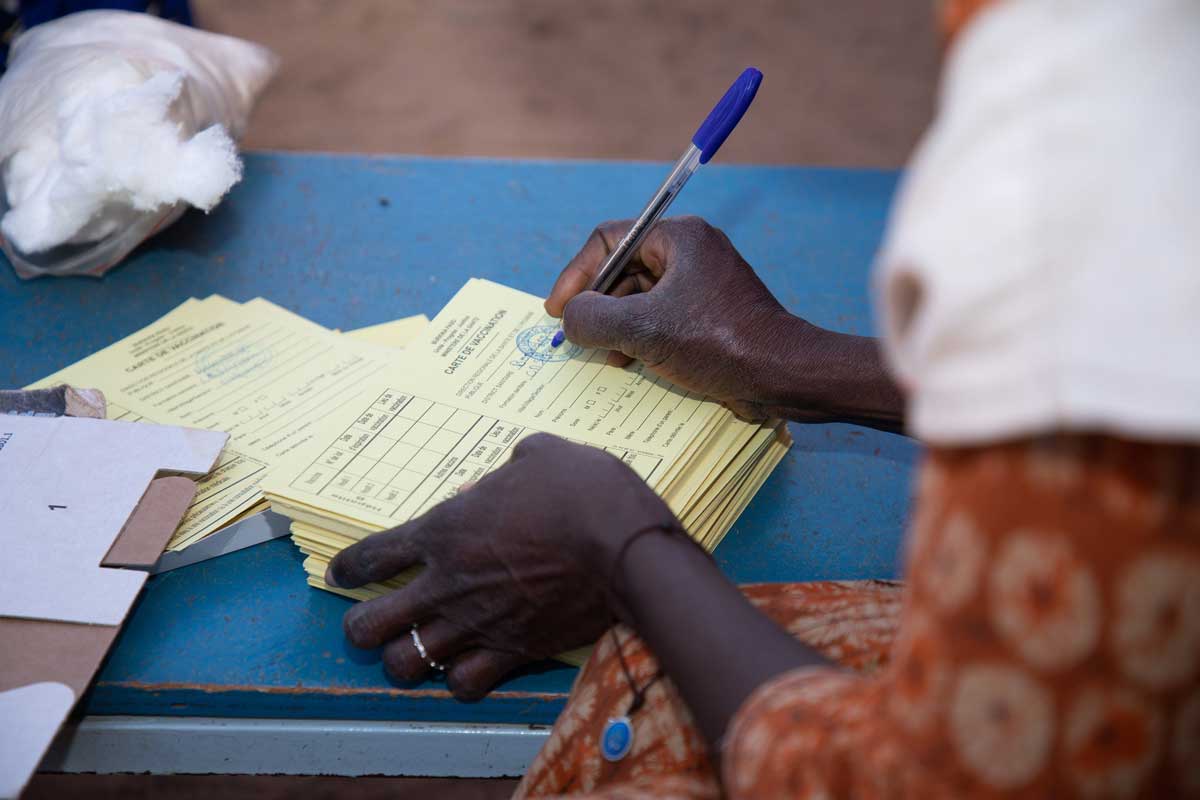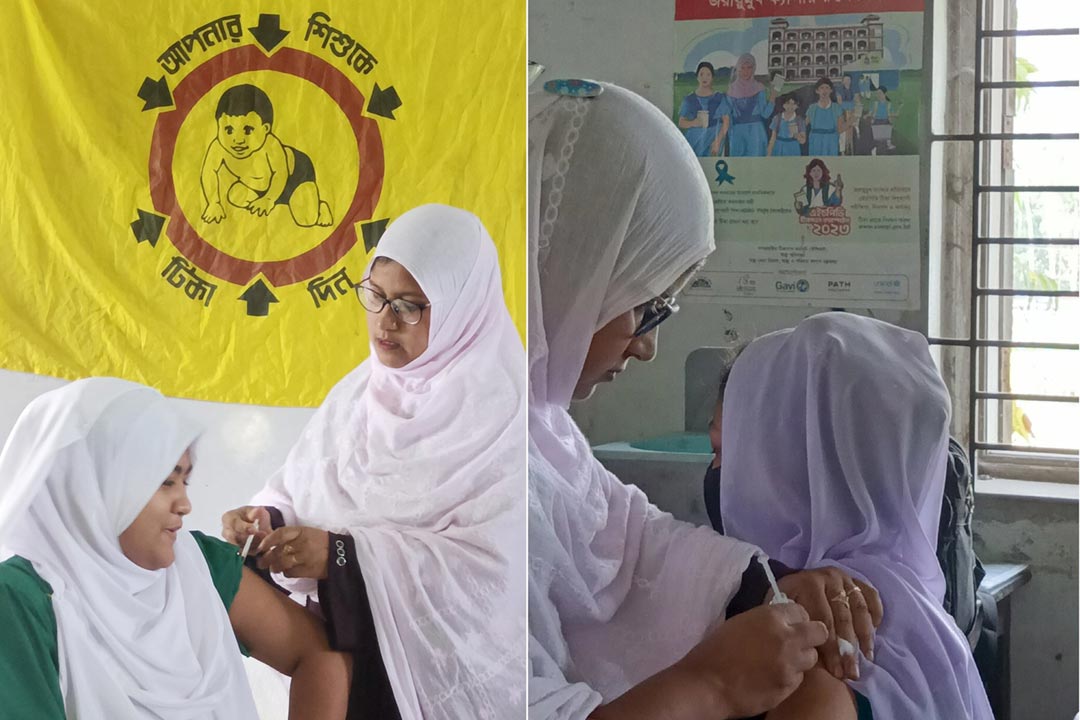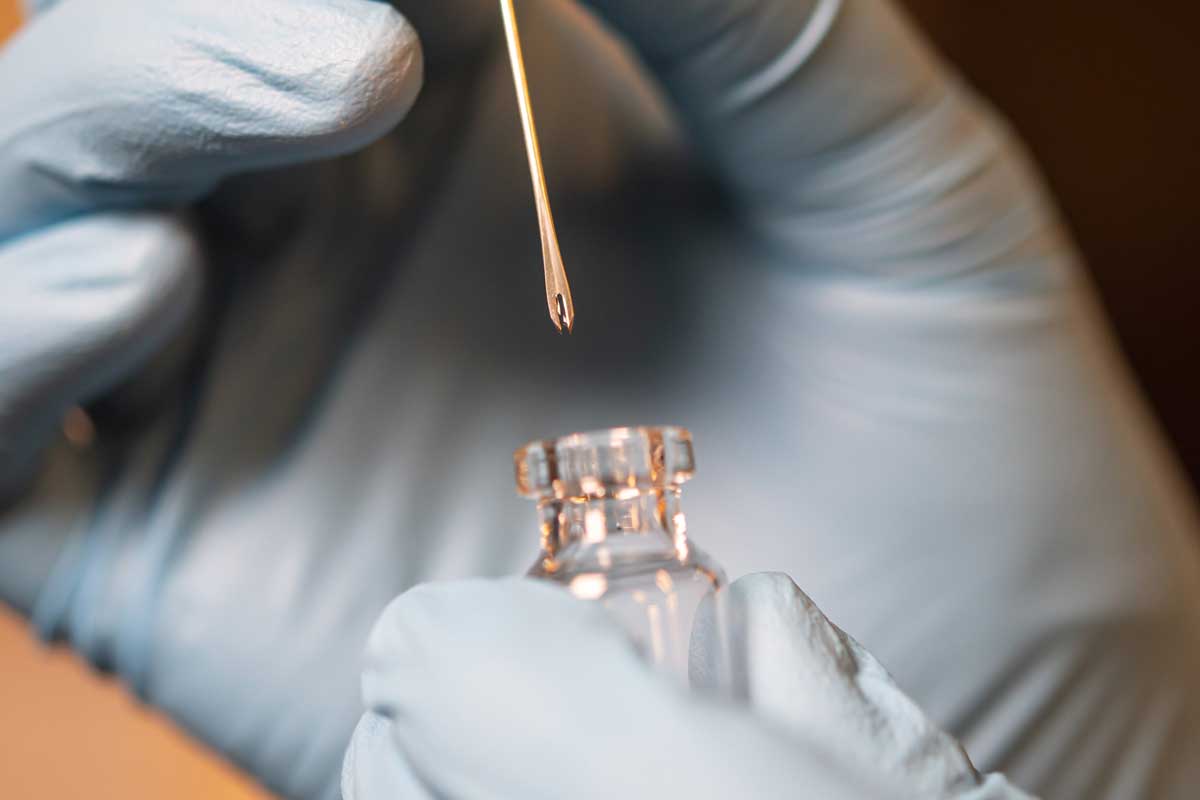A secret ingredient for stronger vaccines?
An ingredient called dmLT could be the key to improving vaccine effectiveness in low-resource settings.
- 25 September 2020
- 3 min read
- by PATH

Chances are you’ve heard of a vaccine antigen – the core of what makes a vaccine work. Whether for flu, rotavirus, or measles, the vaccine antigen is what activates your immune system and prepares you for future threats.
Like a hero’s sidekick doing indispensable work behind the scenes, vaccine adjuvants don’t always get the attention they deserve.
“An adjuvant boosts a vaccine’s performance and, in some cases, generates a specific type of immune response not obtained with the vaccine antigen alone,” explains Lou Bourgeois, a science officer with PATH’s Center for Vaccine Innovation and Access.
PATH launched a Phase 1 trial to test adding a new adjuvant to inactivated polio vaccine. The adjuvant is called double-mutant labile toxin or dmLT. This new trial will build on recent findings showing dmLT can improve the intestinal immune response of both oral and injected vaccines.
If successful, this new approach could change the landscape of polio vaccines for years to come.
The best of both vaccines
There are two kinds of polio vaccine: oral and inactivated.
Oral polio vaccine is the go-to option for controlling outbreaks because it stimulates intestinal immunity, which stops the chain of person-to-person transmission – an essential feature for high-risk settings.
Have you read?
Unfortunately, oral polio vaccine has one downside: in very rare instances, the weakened virus it contains can regain strength after being “shed” from the body. This can actually cause new outbreaks, particularly in areas where many children are unvaccinated.
Inactivated polio vaccine – the other kind – is injected into the muscle rather than being taken orally. Because the virus is inactivated, it doesn’t run the risk of causing community outbreaks, but it doesn’t stop person-to-person transmission either.
“What if we could have the best of both worlds with a single inactivated vaccine?” asks Deborah Higgins, a project director with PATH’s Center for Vaccine Innovation and Access. “We could put an end to vaccine-derived outbreaks and stop person-to-person transmission. If dmLT can make it possible, it could be a powerful new tool in the polio eradication era.”
The current Phase 1 trial is testing the safety and immunogenicity of IPV co-administered with dmLT (IPV-dmLT) on the heels of some exciting dmLT news from another PATH clinical trial.
A major milestone
Last fall, in a milestone for both dmLT and the E. coli vaccine candidate ETVAX, results from a study in Bangladesh demonstrated both the safety and improved immunogenicity of the oral vaccine when administered with dmLT in young children and infants.
ETEC – enterotoxigenic Escherichia coli by its full name – is one of the most common bacterial pathogens causing diarrhea. It causes substantial illness and death among children in low- and middle-income countries, and no vaccines against this pathogen are available – yet. If the next phases prove successful, ETVAX could be the first.
This finding has implications for other oral vaccines, too (such as cholera): children in regions of high disease burden – many of whom have intestinal damage from repeated enteric infections – don’t always get the full protective benefits of oral vaccines as a result. The potential of dmLT to help a vaccine perform at full capacity in an intestinal environment is tremendous.
“Ultimately, our hope is that dmLT can make vaccines work even better for the children who need them most.” says Lou. “Every ounce of improved vaccine performance pays back dividends for people around the world.”










